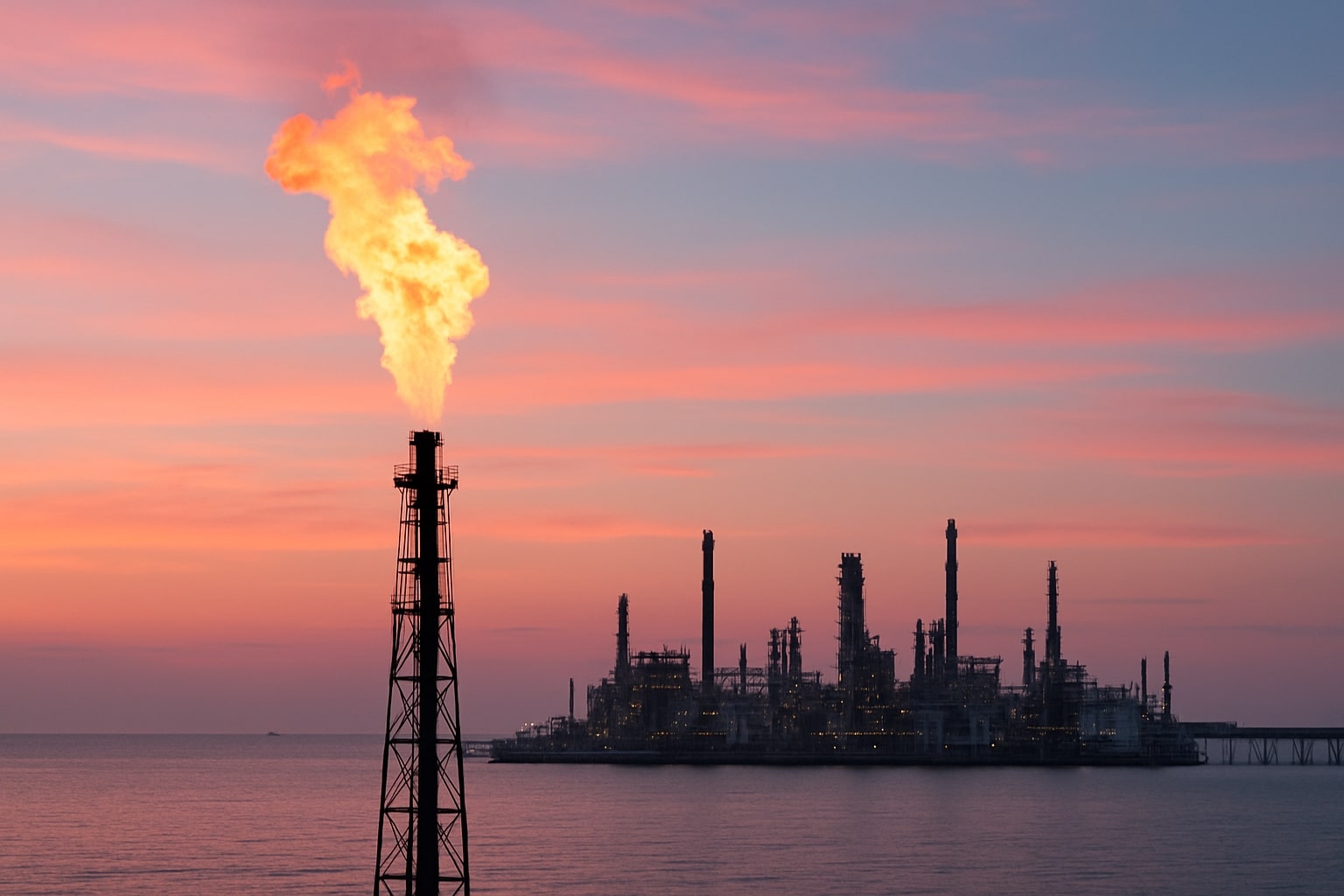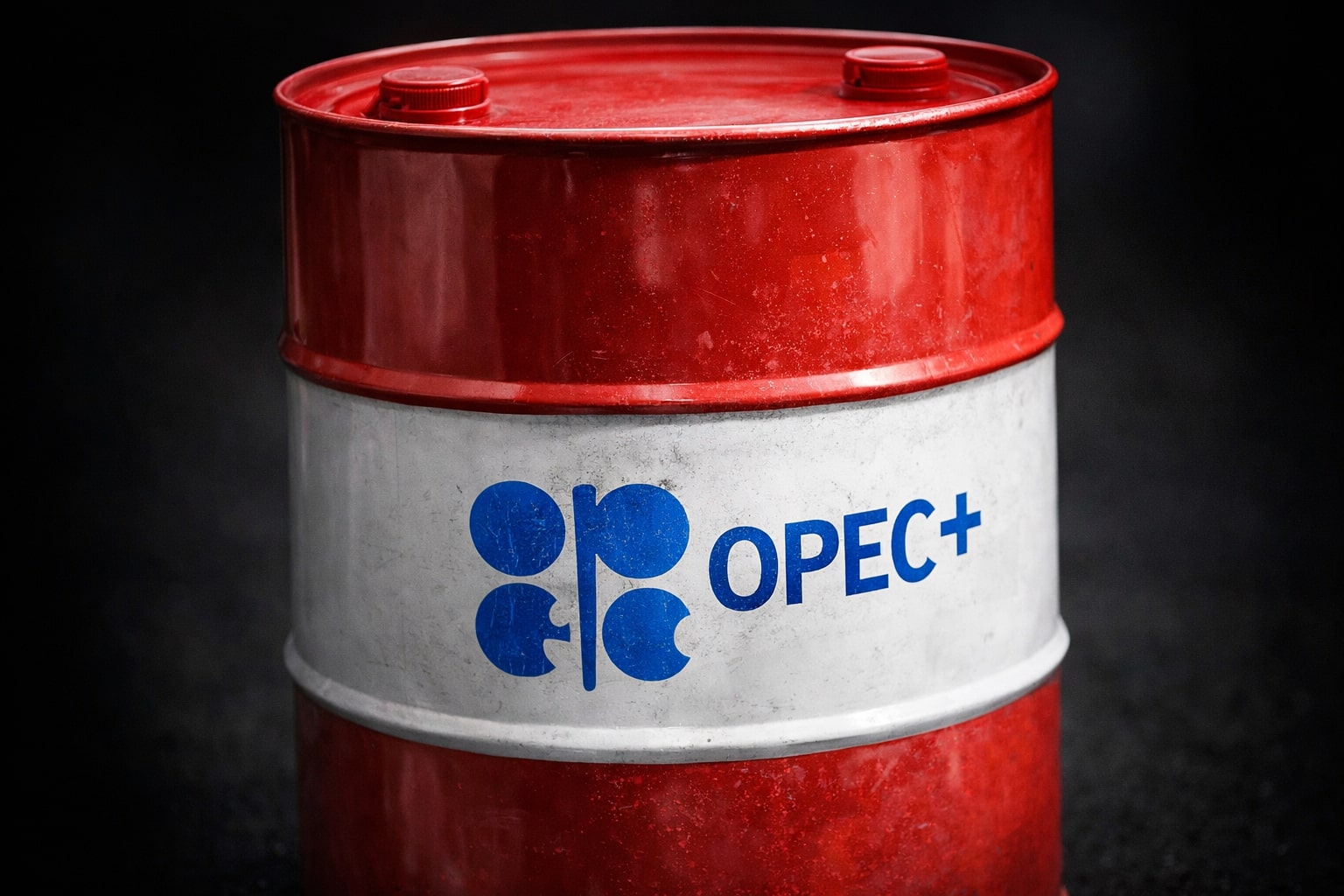
Natural Gas Price - (NG=F) at $2.92 Faces Bearish Momentum With Risk Toward $2.62
Storage builds, weak LNG demand, and regional hub discounts reinforce downside pressure on NG=F despite oversold conditions | That's TradingNEWS
Natural Gas Price Outlook: NG=F Slips Toward $2.92 as Storage Builds and LNG Flows Shift
The natural gas market (NG=F) is locked in a critical phase, with prices slipping below $3.00 and testing $2.92 support after a string of bearish sessions. Selling pressure intensified when the contract failed to hold above $3.04 and $3.01, where the 50-day and 200-day moving averages converged. That breakdown pushed momentum firmly into negative territory, with bears now targeting $2.87 and potentially the $2.79–$2.73 range. The RSI reading near 24 signals oversold conditions, but no firm reversal has materialized, making the current $2.92–$2.87 corridor a high-stakes battleground for traders.
Technical Breakdown of NG=F
The 20-day moving average and the 50% Fibonacci retracement sit almost perfectly aligned at $2.91, turning this level into a line of defense for bulls. A decisive close below it would not only expose $2.84 but also increase the risk of retesting the August swing low of $2.62. A recovery attempt, on the other hand, faces resistance at $2.96, followed by $3.01 and the psychological barrier of $3.05. Any move above those levels would be required to shift sentiment away from the prevailing bearish channel that has capped rallies since the $3.20 rejection earlier this month.
Storage and Shoulder Season Pressure
Fundamentals reinforce the technical weakness. The latest EIA data confirmed inventories are swelling toward 4.0 trillion cubic feet (Tcf) ahead of the end of injection season, leaving the market well supplied. The build came in line with forecasts, but the sheer volume of stored gas keeps buyers on the sidelines. Weak feed gas demand for LNG export facilities adds to the drag. While Gulf Coast LNG terminals continue to operate steadily, recent pullbacks in flows highlight the fragility of demand during the shoulder season, when cooling requirements are fading but winter heating demand has not yet begun.
Northwest Hub Divergence and Regional Discounts
In regional hubs, pricing disparities underscore the softness. Northwest Sumas averaged only $1.59 per MMBtu year-to-date, reaching an unprecedented $0.56 in June—the lowest on record. Robust Canadian supply from Alberta and British Columbia’s Montney shale, coupled with displaced gas from higher renewable generation, has pushed Pacific Northwest inventories above 95% capacity. Cross-border imports from Canada averaged 4.5 Bcf/d in February, a record high, although flows eased in late summer as Canadian LNG projects siphoned off some supply. These dynamics have left regional spot prices deeply discounted compared to Henry Hub.
European and Global LNG Dynamics
Across the Atlantic, Dutch TTF front-month slipped €0.33 to €32.05/MWh, pressured by forecasts for a 60% surge in wind generation across Northwest Europe and a jump in LNG send-outs. Belgian and Dutch terminals are processing an additional 151 GWh/day, with 20 cargoes scheduled in the coming fortnight. Norway’s pipeline exports dipped slightly, but the glut of LNG capacity is overwhelming marginal supply cuts. UBS forecasts medium-term LNG prices to fall from $13/MMBtu in 2025 to $11.5 in 2026, sliding to $8 by 2030. That projection reflects the expected wave of liquefaction capacity coming online, notably in the United States, which could strain utilization rates. Equinor is flagged as most exposed to downside, while LNG service firms like GTT stand to benefit.
Macroeconomic and Demand Considerations
On the demand side, the US industrial complex remains vulnerable to macroeconomic slowdown. With the Fed widely expected to cut rates by 25 bps at its next meeting, weaker industrial activity could reduce electricity usage and further weigh on natural gas consumption. The University of Michigan’s sentiment index fell sharply to 55.4 in September, raising questions over the resilience of consumer and industrial demand. At the same time, renewable generation continues to encroach on gas demand. In the Pacific Northwest, solar generation rose 21% year-over-year in the first half of 2025, while hydropower also climbed, leaving gas burn for power 12% lower than the year before.
Market Positioning and Verdict
Natural gas (NG=F) is trapped between oversold technicals and structurally bearish fundamentals. Immediate price action hinges on the $2.92–$2.87 support band. A decisive break could unlock $2.79 and expose the $2.62 August low, while upside attempts require clearing $3.05 to regain bullish traction. With storage nearing 4.0 Tcf, shoulder season demand depressed, and LNG export flows volatile, the bias leans bearish despite short-term oversold conditions. Given the current setup, the market presents more risk than reward on the long side. Until winter demand catalysts or unplanned supply disruptions emerge, NG=F tilts toward a Sell stance with downside risk extending toward $2.73 and potentially $2.62.
That's TradingNEWS
Read More
-
AbbVie Stock Price Forecast - ABBV at $229 Turns the Humira Cliff Into a 2026 Growth Engine
02.01.2026 · TradingNEWS ArchiveStocks
-
XRP Price Forecast - XRP-USD Nears $2 as $1.80 Support and Shrinking Supply Point to $2.60 Target
02.01.2026 · TradingNEWS ArchiveCrypto
-
Oil Price Forecast - Oil Slide Into 2026: WTI Stuck at $57, Brent at $60
02.01.2026 · TradingNEWS ArchiveCommodities
-
Stock Market Today: Nasdaq Hits 23,467 as Nvidia (NVDA), Micron (MU) and Baidu (BIDU) Drive AI Surge
02.01.2026 · TradingNEWS ArchiveMarkets
-
GBP/USD Price Forecast: Pound Holds 1.3450 as Fed–BoE Split Keeps Bulls Aiming at 1.37
02.01.2026 · TradingNEWS ArchiveForex



















